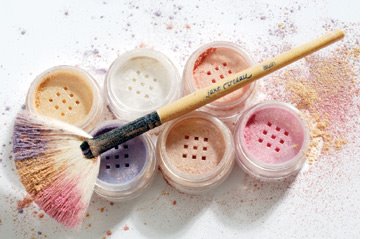 A new study shows it's never too late to improve bone health and reduce the risk of fracture. Read on to discover what you can do - and why it works at any age!
A new study shows it's never too late to improve bone health and reduce the risk of fracture. Read on to discover what you can do - and why it works at any age!
By Colette Bouchez
This week a new medical study offered just the kind of news I live to hear: That’s it’s never too late to look to Mother Nature for better health!
Indeed, in research published in the British Medical Journal researchers from the University of California Davis documented how taking vitamin D and calcium together can improve bone health and prevent bone breaks- no matter what age you are when you begin the therapy!
This is an important finding for several reasons. First, in the past many studies of vitamin D and calcium taken independently of one another frequently yielded conflicting results. While some found that either of these nutrients could reduce bone breaks and benefit bone health, other studies found they had little or no effect.
Today’s study found it is, in fact, the combination of the two nutrients - vitamin D taken together with calcium - that yields the positive bone health results.
“What is important about this very large study is that goes a long way toward resolving conflicting evidence about the role of vitamin D, either alone or in combination with calcium, in reducing fractures,” said co-author of the study, Professor John Robbins from the University of California, Davis.
But equally as important: The study also found you could get these same results no matter your age, sex, or history of previous fractures. In fact, everyone who took the combination supplements had a reduced risk of bone fractures!
“This study supports a growing consensus that combined calcium and vitamin D is more effective than vitamin D alone in reducing a variety of fractures,” said Robbins.
What also made this research even more significant is that it involved an analysis of 7 previous studies involving a total of more than 68,000 participants - 15% of which were men - so the base upon which to draw conclusions was vast. Moreover, by reanalyzing the data from all 7 trials in a single study researchers were able to clearly see that when participants took as little as 10 mcg of vitamin D daily along with about 1,000 mg of calcium bone health resulted! More specifically the combination of nutrients reduce the risk of hip fracture by 16% while the overall risk of fracture went down some 8%. Those who took vitamin D at a dose of 10 or 20 mcg alone - without the calcium - saw no reduction in fractures.
What makes the combination so effective say researchers is that while calcium is essential for bone health, it is vitamin D that helps deliver that calcium into the bones where it can be used to keep bones strong.
Bone Health and Menopause
All of this is extremely important information for women over 45 since this is when our bones first begin to weaken. That’s due to a loss of estrogen, which begins to drop as we approach menopause. What’s the link?
Much like vitamin D, estrogen helps our bones utilize calcium in what is known as the “remodeling “ process. This is the natural break-down and build-up of bone cells that occurs throughout our lifetime.
As we age, however, and estrogen levels plummet we also experience a drop in calcium absorption. And that me our bone breaks down faster than it builds up- and that in turn leads to weaker bones which fracture more easily. This is one reason that many doctors not only recommended women increase their intake of calcium as they age, but , until a few years ago, also recommended HRT - hormone replacement therapy, which helped replenish some of the lost estrogen and thus helped keep bones strong.
Now, however, while we know calcium is still important, we can duplicate the absorption effects of estrogen - without any of the side effects of HRT - by simply adding vitamin D supplementation along with the extra calcium.
And again, this is super important for women since, as we age, our risk of the bone thinning disorder osteoporosis - and it's accompanying increased risk of hip fracture - increases. Indeed, to date , some 75 million adults are believed to suffer with osteoporosis in the US, Europe and Japan - the vast majority of them women.
Moreover, with our diligence in avoiding sun exposure - or using heavy sunscreens when we do hit the sun - most of us are now vitamin D deficient. And that means even if you’re taking calcium supplements, you’re probably not getting the benefits or the protection you think.
If you don’t want to take either vitamin D or calcium supplements, then be certain your diet contains lots of calcium-rich foods, and be sure to get 20 minutes of unprotected sun exposure everyday. The body makes vitamin D from changes that occur in skin cells when we are exposed to direct sunlight.
If you do want to take a supplement, the study found that 800 units of vitamin D in conjunction with 1000 mg of calcium are all that’s needed to confer protection.
To learn more about choosing a bone health supplement, click here.
This week a new medical study offered just the kind of news I live to hear: That’s it’s never too late to look to Mother Nature for better health!
Indeed, in research published in the British Medical Journal researchers from the University of California Davis documented how taking vitamin D and calcium together can improve bone health and prevent bone breaks- no matter what age you are when you begin the therapy!
This is an important finding for several reasons. First, in the past many studies of vitamin D and calcium taken independently of one another frequently yielded conflicting results. While some found that either of these nutrients could reduce bone breaks and benefit bone health, other studies found they had little or no effect.
Today’s study found it is, in fact, the combination of the two nutrients - vitamin D taken together with calcium - that yields the positive bone health results.
“What is important about this very large study is that goes a long way toward resolving conflicting evidence about the role of vitamin D, either alone or in combination with calcium, in reducing fractures,” said co-author of the study, Professor John Robbins from the University of California, Davis.
But equally as important: The study also found you could get these same results no matter your age, sex, or history of previous fractures. In fact, everyone who took the combination supplements had a reduced risk of bone fractures!
“This study supports a growing consensus that combined calcium and vitamin D is more effective than vitamin D alone in reducing a variety of fractures,” said Robbins.
What also made this research even more significant is that it involved an analysis of 7 previous studies involving a total of more than 68,000 participants - 15% of which were men - so the base upon which to draw conclusions was vast. Moreover, by reanalyzing the data from all 7 trials in a single study researchers were able to clearly see that when participants took as little as 10 mcg of vitamin D daily along with about 1,000 mg of calcium bone health resulted! More specifically the combination of nutrients reduce the risk of hip fracture by 16% while the overall risk of fracture went down some 8%. Those who took vitamin D at a dose of 10 or 20 mcg alone - without the calcium - saw no reduction in fractures.
What makes the combination so effective say researchers is that while calcium is essential for bone health, it is vitamin D that helps deliver that calcium into the bones where it can be used to keep bones strong.
Bone Health and Menopause
All of this is extremely important information for women over 45 since this is when our bones first begin to weaken. That’s due to a loss of estrogen, which begins to drop as we approach menopause. What’s the link?
Much like vitamin D, estrogen helps our bones utilize calcium in what is known as the “remodeling “ process. This is the natural break-down and build-up of bone cells that occurs throughout our lifetime.
As we age, however, and estrogen levels plummet we also experience a drop in calcium absorption. And that me our bone breaks down faster than it builds up- and that in turn leads to weaker bones which fracture more easily. This is one reason that many doctors not only recommended women increase their intake of calcium as they age, but , until a few years ago, also recommended HRT - hormone replacement therapy, which helped replenish some of the lost estrogen and thus helped keep bones strong.
Now, however, while we know calcium is still important, we can duplicate the absorption effects of estrogen - without any of the side effects of HRT - by simply adding vitamin D supplementation along with the extra calcium.
And again, this is super important for women since, as we age, our risk of the bone thinning disorder osteoporosis - and it's accompanying increased risk of hip fracture - increases. Indeed, to date , some 75 million adults are believed to suffer with osteoporosis in the US, Europe and Japan - the vast majority of them women.
Moreover, with our diligence in avoiding sun exposure - or using heavy sunscreens when we do hit the sun - most of us are now vitamin D deficient. And that means even if you’re taking calcium supplements, you’re probably not getting the benefits or the protection you think.
If you don’t want to take either vitamin D or calcium supplements, then be certain your diet contains lots of calcium-rich foods, and be sure to get 20 minutes of unprotected sun exposure everyday. The body makes vitamin D from changes that occur in skin cells when we are exposed to direct sunlight.
If you do want to take a supplement, the study found that 800 units of vitamin D in conjunction with 1000 mg of calcium are all that’s needed to confer protection.
To learn more about choosing a bone health supplement, click here.
For more ways to live better, longer and healthier visit RedDressDiary.com - your source for health and beauty news for fabulous women over 40! Or visit CheapChicDiary.com to look fabulous on a tiny budget!
Copyright by Colette Bouchez 2009 - All Rights Reserved.
In addition to US Copyright, the text of this RedDressDiary article is licensed under a Creative Commons Attribution-ShareAlike 3.0 License. All formatting and style elements of this page are not available under this license, and Colette Bouchez retains all rights in those elements.
Copyright by Colette Bouchez 2009 - All Rights Reserved.
In addition to US Copyright, the text of this RedDressDiary article is licensed under a Creative Commons Attribution-ShareAlike 3.0 License. All formatting and style elements of this page are not available under this license, and Colette Bouchez retains all rights in those elements.




































